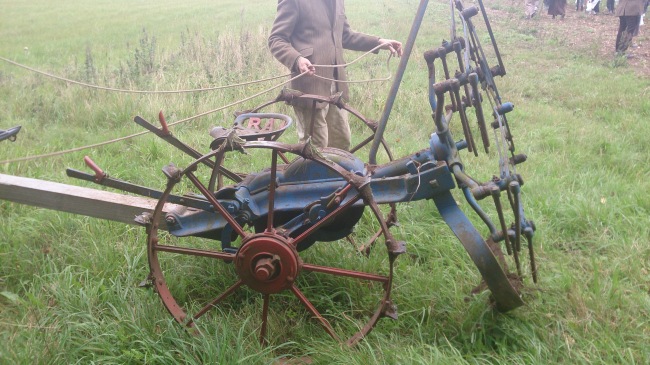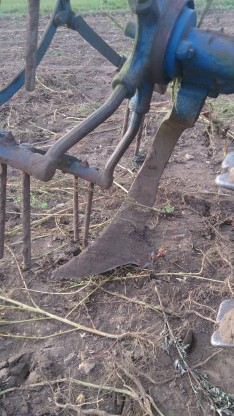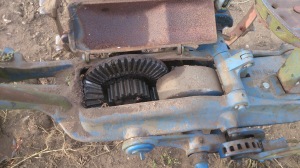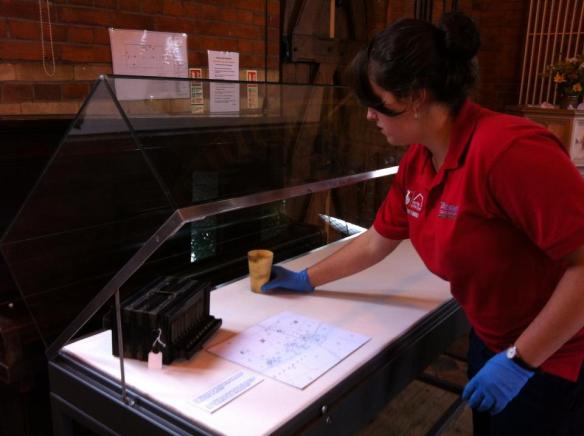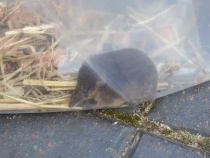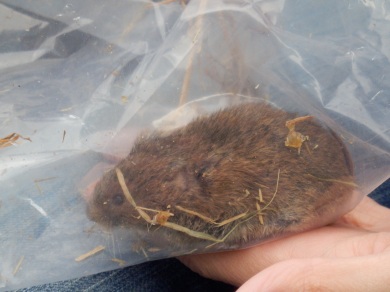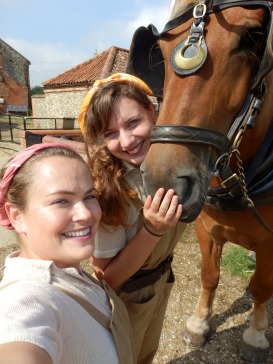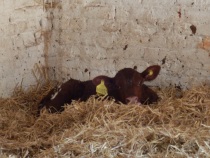Following up from my last blog explaining how we had been harvesting the rye, oats and barley down on the farm, (I hoped you all liked it) I thought that as my latest blog coincides with our potato harvest, I would explain a little further.
Richard with the horses
The way we harvest the potatoes here at Gressenhall is through the use of a horse drawn Ransomes potato spinner. The spinner we use is a later model dating from around the 1940s.
Spinner
Bottom blade and tines
As you can see from the picture above, the spinner works by the bottom blade cutting into the ridged row of potatoes and then the spinning tines pushing the crop out to the side. As the blade digs into the row, the soil that is pushed up cushions the potatoes from being bruised and broken during the harvesting process. The spinner is powered by a land wheel connected to a gear box that then powers the spinner mechanism. (See gearbox picture below) When using the machine the operator has control over the depth the blade cuts into the ridge and also the controls to engage the main driving gear. The harvested potato crop is then picked by hand and loaded into a vehicle. In our case we use Trojan in a tumble.
A Little history behind Ransomes
Ransomes, Sims and Jeffries (also known as Ransomes, Ransomes, Sims & Head) based in Ipswich Suffolk, was a British agricultural machinery manufacturers producing a vast range of products including traction engines, ploughs, lawn mowers, combine harvesters and other farming machinery. They also manufactured aeroplanes during the First World War.
As our harvest is now coming to an end, I look forward to preparing the fields ready to sow next years crop. As I said in my last blog, I cannot wait to get some ploughing done with the horses.
Ben Preston – Heritage Farming Apprentice


